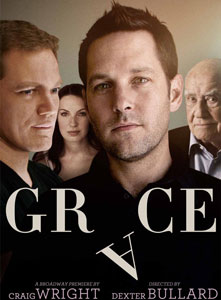 Kickstarter has revolutionized the way creative projects have been funded. While some have criticized how big name stars have used the website to raise money for their projects, for the most part Kickstarter is used by new voices in the hope that they can get their dream projects funded. In particular, Kickstarter has been a wonderful tool for an art form that has found it increasingly difficult to raise money for in recent years: indie theater.
Kickstarter has revolutionized the way creative projects have been funded. While some have criticized how big name stars have used the website to raise money for their projects, for the most part Kickstarter is used by new voices in the hope that they can get their dream projects funded. In particular, Kickstarter has been a wonderful tool for an art form that has found it increasingly difficult to raise money for in recent years: indie theater.
While there are grants and funding available for theater groups, the amount of paperwork a company needs to fill out in order to even qualify for that money is often mind-boggling. And while those are still viable avenues for raising capital for theater groups, many companies are discovering that Kickstarter is an easier, more reliable way to get their productions funded.
Playbill.com gives some examples of theater groups that have recent success with Kickstarter. We already reported on the successful Kickstarter campaign to raise an extra $150,000 for the American Psycho musical, though other theater companies have had Kickstarter success on smaller scales. For example, Old Sound Room, a theater company formed by Yale School of Drama students, recently raised over $20,000 in 25 days to fund their production of King Lear when they had to part with a benefactor over creative differences. Fisher Neal, a member of the group, explains, “We were able to acquire a donated rehearsal and performance space, which took out a big chunk of what we had to raise. So really all we had to do was to raise enough to quit our day jobs, so we could work on the thing, and to buy whatever props we might end up needing.” In fact, the group had enough money left over to take their company to the next level. Neal adds, “Since we had a free space, and spent very little on props and costumes—between that and the box office, we were left with a few thousand dollars left over. We don’t have enough to mount a production of that size again, but we do have enough to file applications to become a 501c3 [nonprofit] and hire a lawyer and an accountant, and also maybe do some smaller productions in the meantime.”
Of course, veteran Kickstarter users who have had success with the website know that it can be a nerve-wracking process — because if a Kickstarter doesn’t reach it’s goal, all pledged funds are canceled. On top of that, most projects that do hit their goal don’t do so until hours before the deadline. Artists offer incentives for people whose contributions reach a certain level, but it’s imperative that those obligations are fulfilled. Old Sound Room offered everything from tickets, t-shirts, and even a private performance of the play to those with deep pockets.
That is perhaps one of the most important thing to know about Kickstarter: it requires a lot of work to pull it off successfully. Without an attractive page that draws attention and interest (including creating a video for the page and promoting the project on social media), Kickstarter can’t be the way to save a theater company from canceling a production because of lack of funds.
So next time you read an article about a big name star looking to fund his or her next movie, before you send a few bucks their way you might want to check and see what else is happening on Kickstarter in your community. You might find a theater group who could use that money, too!




